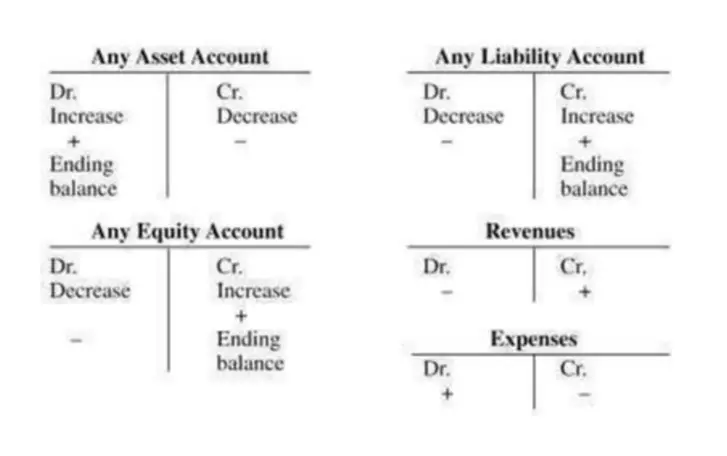Content

In January, it took Light Up Electric almost seven days, on average, to collect outstanding receivables. This means Light Up Electric’s average collection period for the year is about 17 days. It’s not enough to look at a final balance sheet and guess which areas need improvement. You must monitor and evaluate important A/R key performance metrics in order to improve performance and efficiency. Both equations will produce the same average collection period figure if you have the appropriate data.
In accounting the term Debtor https://www.bookstime.com/articles/average-collection-period indicates the average time taken to collect trade debts. In other words, a reducing period of time is an indicator of increasing efficiency. It enables the enterprise to compare the real collection period with the granted/theoretical credit period.
Average Collection Period Examples
It may mean that the company isn’t as efficient as it needs to be when staying on top of collecting accounts receivable. However, the figure can also represent that the company offers more flexible payment terms when it comes to outstanding payments. Using those assumptions, we can now calculate the average collection period by dividing A/R by the net credit sales in the corresponding period and multiplying by 365 days. In order to calculate the average collection period, the company’s accounts receivable (A/R) carrying values from its balance sheet are needed along with its revenue in the corresponding period. The average collection period is the average number of days it takes for a credit sale to be collected.
PYMNTS reports state that 88% of businesses automating their AR processes see a significant reduction in their DSO. Automation also helps reduce manual intervention in the collection processes, allows for proactively reaching out to customers, and assists in setting up appropriate credit limits. Clearly, it is crucial for a company to receive payment for goods or services rendered in a timely manner. It enables the company to maintain a level of liquidity, which allows it to pay for immediate expenses and to get a general idea of when it may be capable of making larger purchases. Offer customers a range of payment options such as credit cards, direct deposits, and online payments. When disputes occur, there is often a string of back and forth phone calls that draws out the process of coming to an agreement and getting paid.
What Is the Average Collection Period Ratio?
While a shorter average collection period is often better, too strict of credit terms may scare customers away. When calculating average collection period, ensure the same timeframe is being used for both net credit sales and average receivables. For example, if analyzing a company’s full year income statement, the beginning and ending receivable balances pulled from the balance sheet must match the same period. Cash flow is the lifeblood of any business, but it can be hard to manage when you’re in the midst of a cash flow crisis. The most common reasons for this are late payments to vendors or slow collections from customers.
What is collection period?
The average collection period is the average number of days it takes a business to collect and convert its accounts receivable into cash.
A little tuning is always needed as a lower collection period can leave some customers dissatisfied. Expecting to pay quicker might appear like a stringent rule and push them to find alternative providers. The lesser the score is, the quicker you get the money in your account and vice versa.
Example of Average Collection Period
Your entire team can access your customers’ entire payment history, giving you a clear picture of your collection efforts. Thus, the average collection period signals the effectiveness of a company’s current credit policies and A/R collection practices. This metric should exclude cash sales (as those are not made on credit and therefore do not have a collection period). A lower average collection period is generally more favorable than a higher one. A low average collection period indicates that the organization collects payments faster.
- These include the industry standard of the average collections period and the company’s past performance.
- This often means turning to debt collectors, repossession, or other expensive alternatives to recover the expected funds.
- Instead of having to remind your customers to pay with dunning letters and phone calls, you can deliver automated reminders before and after an invoice is due.
- The collection period calculation does not include the collection period for non-trade receivables, such as advances to employees, since doing so would skew the result of the calculation.
Depending on the nature of your business, the contents of your lockbox can be removed and processed once a day, or more often if required. You just have to check your bank balance to ensure everything’s been deposited. The Billtrust Blog offers informative accounting insights, advice on automated AR best practices, tips and tricks, and strategies to optimize your AR processes. Liquidity is a financial measure of how instantly you can access cash for business expenses. No matter how strong your budgets are, unexpected expenses can make their way through.
There are plenty of metrics to choose from, of course, so you must select those you measure wisely. This calculation is especially important because it affects the company’s expected cash flow. Businesses use the collection period calculation to see if changes to their credit policies and terms are needed to ensure credit is extended only to trustworthy customers and payments are made on time. Accounts receivable is a part of a company’s accounting process for keeping track of credit it has extended to customers. The average collection period is closely related to the accounts turnover ratio, which is calculated by dividing total net sales by the average AR balance. The average collection period is the average number of days between 1) the dates that credit sales were made, and 2) the dates that the money was received/collected from the customers.
- Credit Sales are all sales made on credit (i.e. excluding cash sales) A long debtors collection period is an indication of slow or late payments by debtors.
- The average collection period is the average number of days between 1) the dates that credit sales were made, and 2) the dates that the money was received/collected from the customers.
- The best way to see if there are any long-term changes in the measure is to look at it on a trend line.
- Learn financial statement modeling, DCF, M&A, LBO, Comps and Excel shortcuts.
- Your entire team can access your customers’ entire payment history, giving you a clear picture of your collection efforts.




